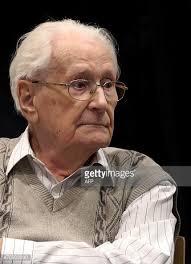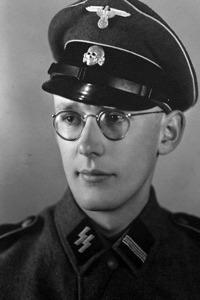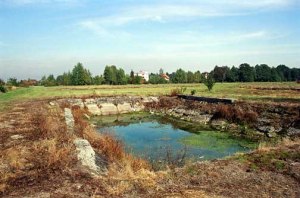As most people know by now, there was a recent fire at the former Majdanek death camp and an estimated 10,000 shoes, formerly worn by the prisoners, were burned. Michael Berenbaum is a well known Holocaust expert who has written books and appeared in documentaries shown on the History Channel on American TV. According to Wikipedia, Berembaum “played a major role in the creation of the USHMM and the content of its permanent exhibition. From 1997 – 1999, Berenbaum served as President and CEO of the Survivors of the Shoah Visual History Foundation, and subsequently (and currently) as Director of the Sigi Ziering Institute: Exploring the Ethical and Religious Implications of the Holocaust, located at the American Jewish University (formerly known as the University of Judaism), in Los Angeles, CA.”
With all of these credentials, I was shocked to read this on Berenbaum’s blog post which you can read here:
A word about Majdanek: The camp is situated in a valley just outside the major town of Lublin, in proximity to Little Majdan from which it derived its name. It was in the Polish territory annexed to the Reich. During the war it was part of Germany proper.
I would interpret “Germany proper” to mean the German Reich (Deutsches Reich) which was Germany from 1918 up to 1938, but Berenbaum probably meant the Greater German Reich (Großdeutsches Reich) which included all the territory that Germany annexed, beginning with Austria in 1938. Lublin and Majdanek were in the General Government, which was the name for German-occupied Poland after 1939.

The General Government, which was occupied Poland, is shown in brown
The map above shows that Majdanek, as well as Treblinka, Sobibor and Belzec, were located in the General Government. The territory in Poland that was annexed into the Greater German Reich is shown in dark orange; Chelmno was the only death camp in the annexed territory.
Berenbaum also wrote this on his blog:
Today it is on a side road, adjacent to the major road between Lublin and Zamosc, a picturesque and charming Polish city. During the war, the camp was obscured from the road – but not from the city. Farmers worked the fields adjacent to the camp.
It has been 12 years since I visited Majdanek, but at that time, and during the time that the camp was in operation, it was on a major road. The road might have been turned into a side road and a new major road built since then. The fact that Majdanek was on a major road when the camp was in operation is used by Holocaust deniers to prove that it was not a death camp. When the camp was in operation, there were houses on two sides and a Catholic cemetery on one side, with the major road on the fourth side.
Here is another quote from Berenbaum’s blog:
Majdanek was captured whole in July 1944. Unlike what happened in Auschwitz, the Nazis had no time to evacuate the camp or to burn it and destroy the evidence.
Every news article about the fire at Majdanek repeats the information that the camp was captured intact because the Nazis had no time to evacuate the camp or to burn it and destroy the evidence.

Prisoners who were liberated from Majdanek by Soviet troops
In the photo above are some of the 1,500 survivors of Majdanek. The men are not cheering the liberators, as the photograph shows. Although the survivors do not look emaciated, most of the men shown in the movie taken by the Soviet liberators were on crutches or had missing feet and were walking on stumps. The movie had no explanation for this strange circumstance, but I later learned from the Museum guidebook that in early 1943, there was a hospital set up in Field II at Majdanek for wounded Russian soldiers who had been POWs, but had defected after their capture and were then wounded in fighting on the side of the Nazis against Communism.
The Museum guidebook that I purchased in 1998 also said that in anticipation of the arrival of Soviet troops, the Nazis had evacuated 15,000 prisoners in March and April 1944, transporting them westward by train to Auschwitz, Gross-Rosen, Ravensbrück, Natzweiler, Mauthausen, Lodz or Plaszow. The last 1,000 prisoners at Majdanek were marched off on foot only the day before the liberation, according to the guidebook. The Russian defectors were left behind because they were too sick or crippled to join the death march out of the camp.
When I read the following quote on Berenbaum’s blog, I deduced that he had not visited the camp himself:
There are two gas chambers at Majdanek; the first one primitive, meant to murder a few. Simple, it has an entrance way, an undressing room, and then a small gas chamber with a motor next door and a sealed booth for the engineer who ran the diesel engine.
And then in the rear of the camp on top of the hill, the visitor sees the large gas chamber and crematoria, still intact, looking as if it is ready to go. The first gas chamber could kill a few people, one dozen or two. The second one could kill thousands and dispose of their bodies, leaving mounds of ashes.
The first gas chamber, described as primitive, was actually the largest of the two gas chambers at Majdanek; it had three or four rooms depending on whether or not you count an L shaped room as one or two rooms. You can read all about the first gas chamber and see photos of it here.
The gas chamber “in the rear of the camp on top of the hill” is actually the smaller of the two gas chambers and it is a reconstruction done by the Soviet Union. This gas chamber is used by Holocaust deniers to prove that Majdanek was not a death camp because this gas chamber, which was allegedly reconstructed according to the original blueprints, has the opening, where the Zyklon-B pellets were poured in, located directly above the floor drain. If the original gas chamber had been constructed this way, the Zyklon-B pellets would have gone down the drain before the prisoners were poisoned. Contrary to Berenbaum’s blog post, the gas chamber in the crematorium building was very small and it was certainly not big enough to kill thousands at one time.

Crematorium building at Majdanek

Reconstructed crematorium at Majdanek Photo Credit: Simon Robertson
Berenbaum included this information on his blog post:
Majdanek was captured by the Soviet Union in July 1944, captured whole before the Germans had time to destroy the camp.
The battle of Lublin between the German troops and the Soviet soldiers went on for two days. During that time, the Germans allegedly burned down the crematorium after they allegedly brought the prisoners from the Gestapo prison in Lublin and shot them in front of the cremation ovens. Supposedly, during the two-day battle, the Germans had no time to burn down the first gas chamber to destroy the evidence or to burn the 800,000 shoes in the camp to destroy the evidence.

Remains of the bodies of Polish politcal prisoners at Lublin
The photo above shows the bodies of prisoners from the Gestapo prison in Lublin. The ovens were not damaged in the fire and they were put into the crematorium that was rebuilt by the Soviets.
Berenbaum wrote this on his blog:
Between October 1942 and September 1943 the SS built two and possibly three gas chambers at Majdanek. Modeled on the gas chambers that were not used at Dachau, they could operate either on Carbon Monoxide or Zyklon B which was in use elsewhere at Auschwitz.
The gas chamber at Dachau, which was not used, according to Berenbaum, did not operate on Carbon Monoxide, according to information at the Dachau Memorial Site where some of the tour guides tell tourists that the gas chamber was used.
There is a lot more in Berenbaum’s article about the number of deaths at Majdanek. You can read all about the death statistics at Majdanek and how the numbers changed over the years here.













